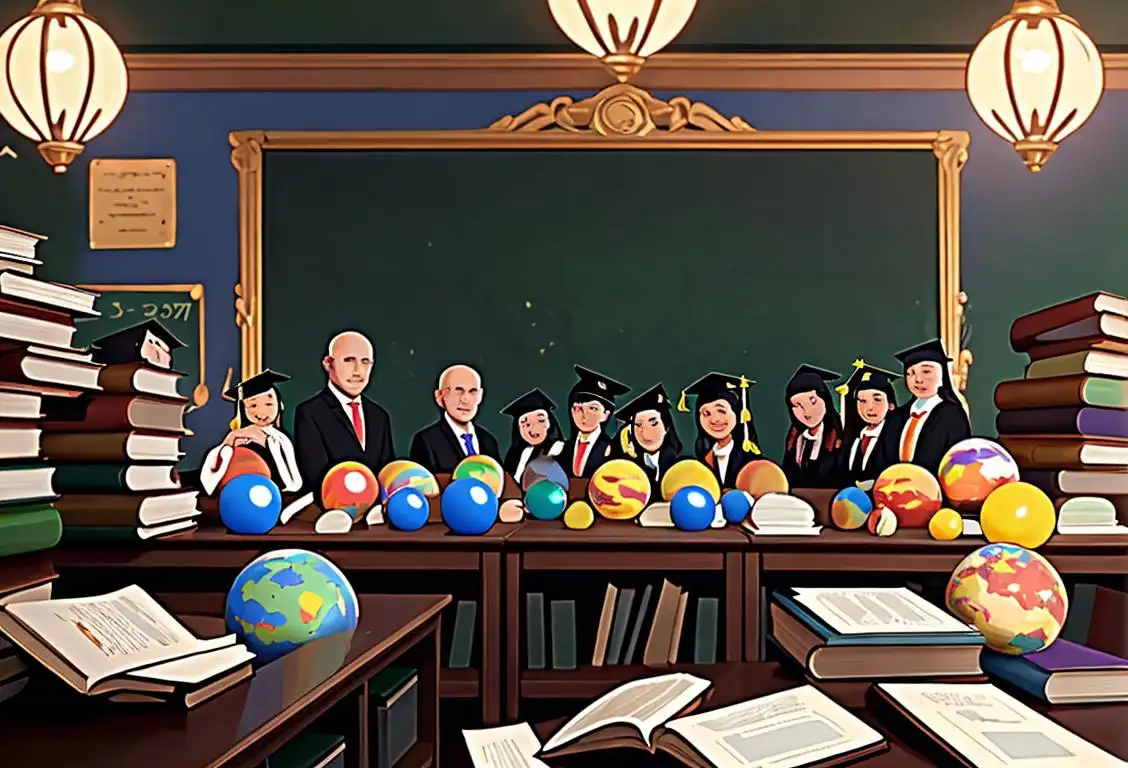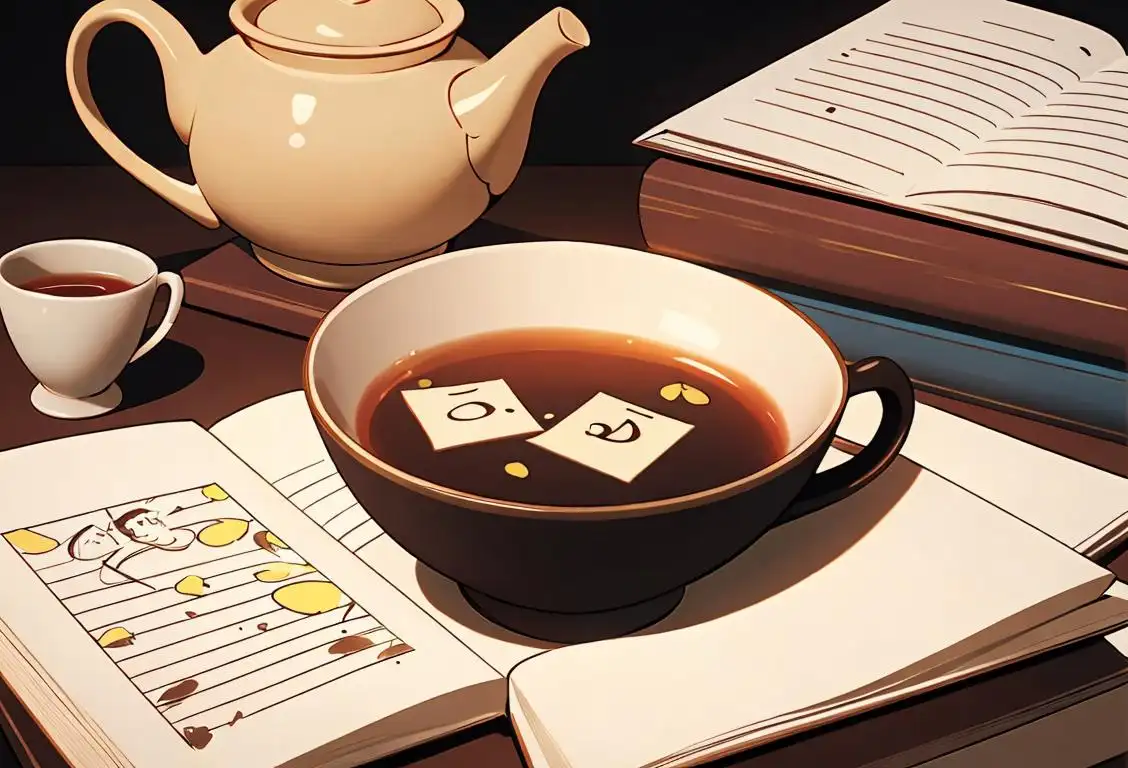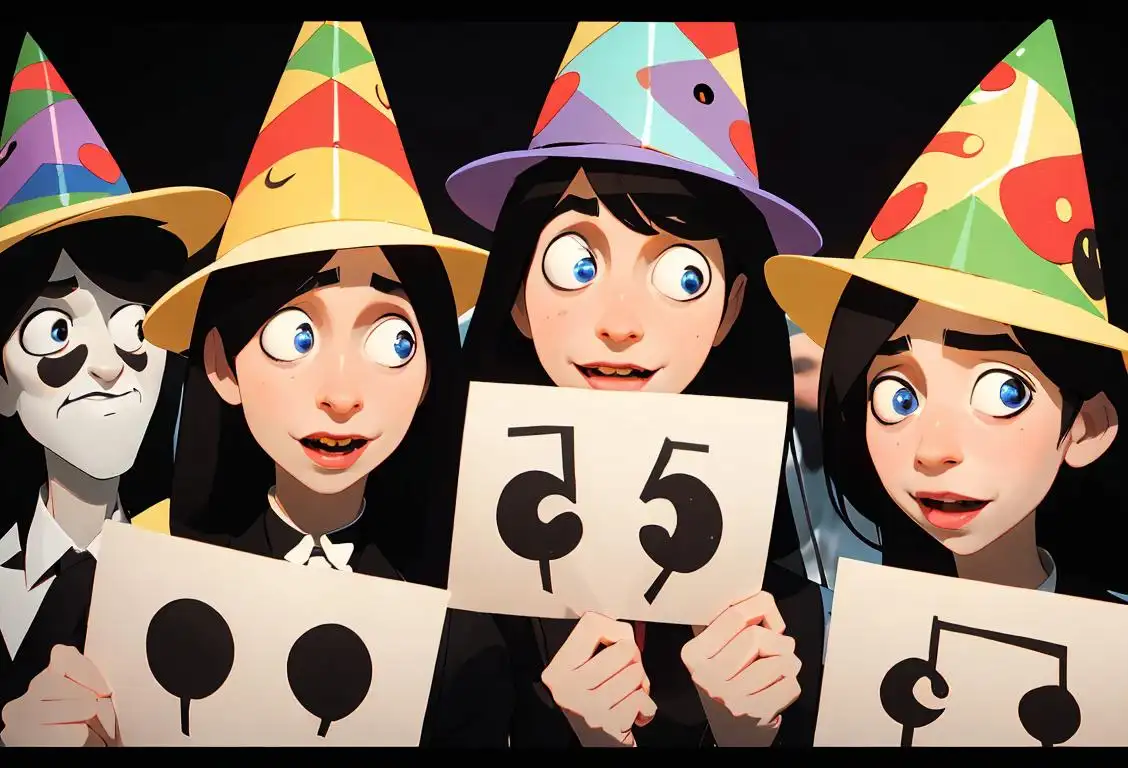National Spelling Day

Welcome to National Spelling Day, where we celebrate the art of putting letters in the right order! Dust off those dictionaries and get ready to flex your vocabulary muscles. This is the perfect day to show off your spelling skills and impress friends, family, and even your pet parrot. So, grab your favorite word list and let's dive into the delightful world of spelling!
When is Spelling Day?
It's national spelling day on the 4th April.
A Brief History of National Spelling Day
Did you know that National Spelling Day was first established on April 4, 2016? Yeah, that's right. It's a relatively new national day, but it quickly gained popularity among word nerds and language enthusiasts. The internet exploded with excitement as people from all walks of life celebrated the magic of correctly spelled words.
Spelling, my friend, is an essential part of effective communication. Imagine a world where words were misspelled left and right! It would be utter chaos. Thankfully, we have National Spelling Day to remind us of the importance of accurate spelling and to honor those who can effortlessly spell words like 'supercalifragilisticexpialidocious' without breaking a sweat.
Tips and Tricks for Spelling Success
If you're thinking of dusting off your spelling bee crown or simply want to improve your everyday spelling, we've got some tips and tricks for you. Remember, even the most experienced spellers can occasionally stumble over a word or two.
1. Break It Down: When confronted with a long and intimidating word, break it down into smaller, more manageable parts. Focus on spelling each part correctly, and then piece everything together like a linguistic jigsaw puzzle.
2. Mnemonic Magic: Mnemonics, those handy memory aids, can work wonders for remembering tricky spellings. For example, you could remember that 'necessary' has one 'c' and two 's's by saying, 'one collar and two socks.'
3. Homophone Havoc: Don't let homophones trip you up! These sneaky words sound the same but have different meanings and spellings. So, whether you're too or to, just remember that 'too' has one 'o' too many for its own good. Easy, right?
Fun Facts About Spelling
Did you know that the English language is a bit of a spelling minefield? Here are a couple of fun facts to blow your mind:
- The word 'queue' is the only word in the English language that is still pronounced the same way when the last four letters are removed. Que-interesting, isn't it?
- The longest word in the English language, according to the Guinness World Records, is 'pneumonoultramicroscopicsilicovolcanoconiosis.' Now that's a mouthful! Just imagine trying to use that in a spelling bee.
Conclusion
So, on this National Spelling Day, let's celebrate the incredible power of words and the beauty of accurate spelling. Take a moment to appreciate the spellcheck feature on your devices, but also challenge yourself to spell out words without relying on those little red squiggly lines. Trust me, your spelling skills will thank you!
History behind the term 'Spelling'
1475
The Birth of the Term 'Spelling'
In 1475, the term 'spelling' made its appearance in the English language. Derived from the Old French word 'espeller' which meant 'to spell, to explain', the term referred to the act of reciting the individual letters of a word in order to spell it correctly. 'Espeller' itself had its roots in the Latin 'spelleum', meaning 'a means of explaining or figuring out'. This marked the beginning of the term's journey into the English lexicon.
600 BCE
Origins in Indo-European Languages
Spelling can be traced back to the origins of writing systems in the Indo-European languages around 600 BCE. These languages, such as Sanskrit and Greek, developed writing systems that involved representing sounds with specific symbols. The idea of spelling emerged as a means to accurately depict the sounds of words through the arrangement of these symbols.
1475
The Origin of 'Spelling'
The term 'spelling' first appeared in 1475, derived from the Middle English word 'spell'. In Middle English, 'spell' referred to a story or narrative. However, the word also had a secondary meaning as a charm or incantation. This secondary meaning of 'spell' led to the development of the term 'spelling' as the act of forming words by arranging letters in a specific order.
1580
The Emergence of English Spelling Books
Fast forward to the late 16th century, English spelling books started to gain popularity. These books aimed to simplify the process of learning spelling by providing comprehensive lists of words along with their correct spellings. One notable publication that contributed to the standardization of spelling was Richard Mulcaster's 'Elementarie' published in 1582. This influential work emphasized the importance of teaching spelling in schools and laid the groundwork for future spelling guides.
700 CE
Middle English and Spelling Variations
During the Middle English period, which lasted from the 11th to the 15th century, the concept of spelling continued to evolve. The English language experienced significant changes in pronunciation, which led to various spelling variations. At this time, scribes and scholars worked on standardizing spelling rules to maintain consistency in written texts.
1588
The Emergence of Modern Spelling
During the late 16th century, English underwent significant changes in pronunciation. As a result, the need for standardized spelling became more apparent. In 1588, Richard Mulcaster, an English educator, published a book titled 'The First Part of the Elementary,' which emphasized the importance of spelling and advocated for consistent spelling rules. Mulcaster's work played a crucial role in the development of modern spelling practices.
1755
Samuel Johnson's Dictionary and Spelling Standardization
The year 1755 witnessed a significant milestone in the history of spelling. Samuel Johnson's monumental work, 'A Dictionary of the English Language', was published. This comprehensive dictionary cataloged a vast number of words along with their definitions, etymologies, and spellings. Johnson's dictionary solidified many spellings that are still in use today and helped establish a more consistent and standardized approach to spelling in the English language.
1475
The Printing Press and Spelling Standardization
The invention of the printing press by Johannes Gutenberg in 1475 revolutionized the spread of knowledge. With the rise of mass production of books, there was a greater need for consistent spelling practices. Printing presses relied on standardized spelling to ensure that texts could be accurately reproduced. This contributed to the establishment of spelling norms.
1755
Dictionary's Influence on Spelling
In 1755, Samuel Johnson published the first comprehensive English dictionary, known as 'A Dictionary of the English Language.' Johnson's dictionary not only defined words but also included standardized spellings. This publication significantly influenced the way people spelled words, providing a reference point for correct spelling and contributing to the standardization of English orthography.
1828
The Webster's Dictionary and American Spelling
No discussion on the history of English spelling would be complete without mentioning Noah Webster. In 1828, Webster published his influential 'American Dictionary of the English Language', which aimed to promote American English and result in a distinct American identity. Webster introduced several spelling reforms, simplifying certain words by removing excessive letters and replacing some letters with others. These changes contributed to a divergence between British and American spelling conventions.
1755
Samuel Johnson's Dictionary
In 1755, Samuel Johnson published his influential dictionary, titled 'A Dictionary of the English Language.' This dictionary played a crucial role in shaping English spelling. Johnson sought to establish a standard spelling system by including commonly used words and their respective spellings. His work helped solidify many conventional spellings that are still in use today.
1828
Webster's Dictionary and Spelling Reform
In 1828, Noah Webster published 'An American Dictionary of the English Language,' which also played a pivotal role in shaping modern spelling. Webster proposed various spelling reforms, including simplifying certain spellings and removing silent letters. While not all his proposed changes were adopted, Webster's dictionary and spelling reforms contributed to further standardization in American English.
19th and 20th Centuries
Orthographic Reforms
Throughout the 19th and 20th centuries, various individuals and language organizations proposed orthographic reforms aimed at simplifying spelling and reducing inconsistencies. Notable examples include the Simplified Spelling Board in the United States and the efforts of George Bernard Shaw in developing a phonetic alphabet. However, these reforms faced significant resistance, and conventional spelling largely persevered.
19th Century
The Rise of Spelling Bees
The popularity of spelling bees soared in the 19th century, particularly in the United States. These competitions, where individuals compete to spell words correctly, became a symbol of academic excellence and linguistic prowess. Spelling bees not only promoted literacy and accuracy but also contributed to the cultivation of a competitive spirit and a love for the English language.
Late 20th Century
Debates on Traditional vs. Simplified Spelling
In the late 20th century, discussions surrounding traditional versus simplified spelling began to gain attention. Advocates argued that simplifying and modernizing English spelling could enhance literacy rates and make learning easier for both native and non-native speakers. However, the proposal to change established spellings faced significant opposition due to concerns about preserving historical and cultural continuity. This ongoing debate reflects the challenges and complexities of spelling in a constantly evolving language.
Present Day
Digital Age and Auto-correct
In the digital age, spelling has become even more influenced by technology. Auto-correct features in word processors, smartphones, and other devices have altered the way we approach spelling. While this may enhance convenience, it also raises concerns about potential dependency on auto-correct and its impact on the development of spelling skills.
20th Century
Spelling Reform Movements
In the 20th century, numerous spelling reform movements arose with the aim of simplifying English spelling. These movements proposed changes to irregular spellings and sought to make spelling more phonetic. While these reform efforts faced both support and opposition, they sparked discussions about the evolution and adaptability of the English language.
Present
Digital Tools and Auto-Correct
With the advent of technology, digital tools and auto-correct features have become ubiquitous in aiding spelling. Smartphones, computers, and word processors now provide instant corrections and suggestions to improve spelling accuracy. While these tools have undoubtedly made spelling more accessible, they have also raised concerns about the potential negative impact on language skills and reliance on technology.
Did you know?
Did you know that the word 'queue' is the only word in the English language that is still pronounced the same way when the last four letters are removed?Tagged
fun education languageFirst identified
4th April 2016Most mentioned on
4th April 2016Total mentions
22Other days
Grammar Grammar Day
Dictionary Day
Teach German Day
Spelling Day
Teacher Day
Teacher Appreciation Day
Grammar Day
Education Day
Punctuation Day
Bird Day








